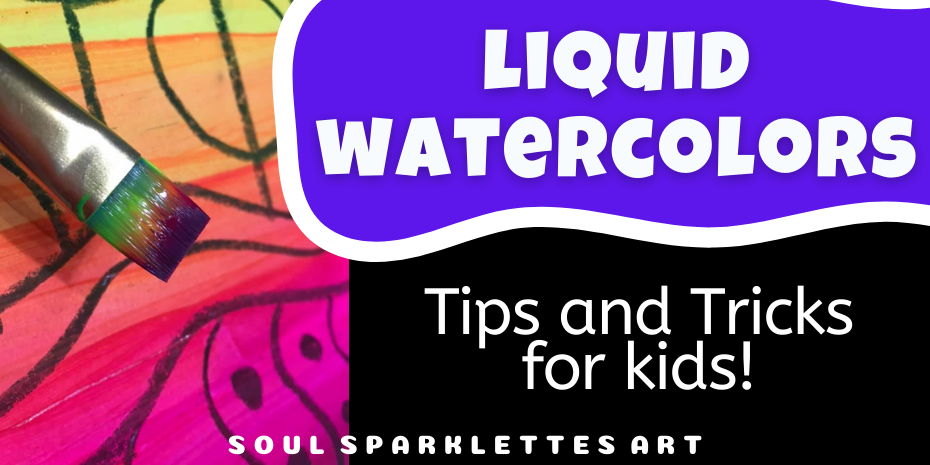When I get out these little tubs of watery paint, the first thing I’m asked is what are those? And then how to use liquid watercolors in art projects that are fun and easy for kids.
We’re all familiar with pan watercolors – the little tray of oval colors and the brush that is often made out of a cheap, scratchy material.
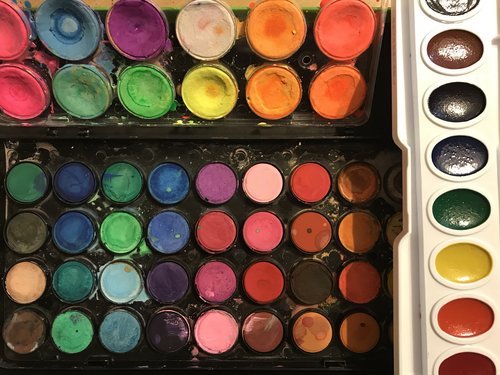
Watercolors have come a long way into the art room. Pans that have far more than your standard colors, shimmer, liquid, tube, and handmade. There are so many choices.
Overwhelmingly the two types that we continue to use are the old-fashioned pan sets and liquid watercolors. But what are the differences? And do you need both?
Watching a child use pan watercolors for the first time can be an exercise in patience. They have to have enough water on the brush, swirl it around in order to collect the paint, and then apply it to the paper.
What generally happens instead is kids use the water with such gusto, droplets fly everywhere (or the water gets knocked over). And then kids don’t get enough paint to make a vibrant color. Or they go after that oval of color so excitedly that they scoop it out like a slice of pie.
That can be frustrating to watch, and it takes time before they really get the process down.
With little kids, I’d like to suggest an alternative: liquid watercolors.
What Are Liquid Watercolors?
When I get these out, parents often ask me what I’m giving the kids to paint with because it almost looks like food coloring and water.
Liquid watercolors are little bottles of concentrated colorful watercolor goodness.
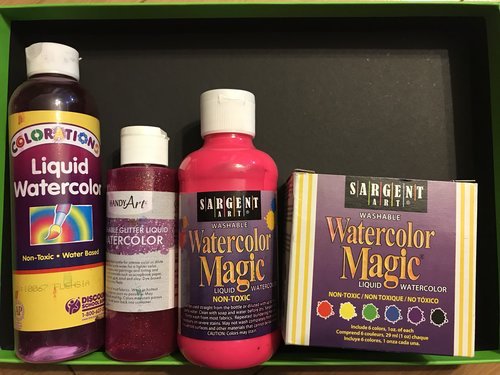
You can use them straight out of the bottle, or with a little water added to the, depending on how vibrant you want your colors. You squirt some in a container, and then kids dip their brush straight in the paint and onto the paper, just like tempera paint.
Liquid watercolors can last for what seems like forever, especially if you dilute the color. And a little goes a long way. I’m still working on learning how much to squeeze out so that I don’t have to waste so much paint.
Liquid Watercolors Up Close
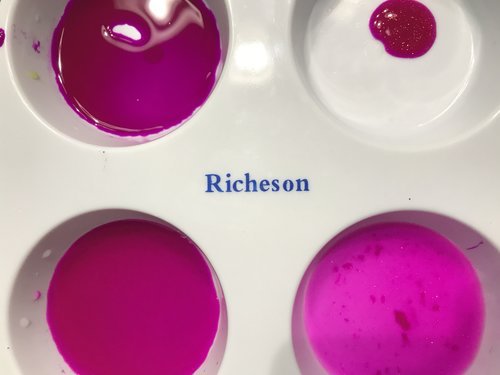
If you squirt a couple of different types into a pan, you can see that one is more gel-like, and one is more liquidy. You can easily add water to both. But what happens when you paint with it?
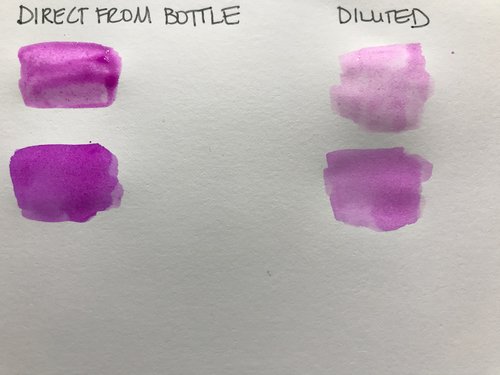
You can see that the colors are still beautiful and vibrant, but diluted, they turn into their paler cousin, like most watercolors. Depending on how much water you add, you can turn them into pastels for springtime, or use them at full strength for vivid results.
You can use these on regular sulphite paper or you can purchase watercolor paper. See here for the best paper to use in your homeschool for art. The main difference is that sulphite paper (which is a heavier weight paper) will absorb the watercolors and watercolor paper will let the paint sit on top where you can do certain watercolor techniques.
One thing to note: unlike tempera paint, liquid watercolors will soak right into a paper plate. I suggest a muffin tin, or a container like the one above, or reused plastic containers.
Liquid Watercolors in Action
My kids have been drawing spirals all over the house, so I decided to introduce them to Hundertwasser today.
Hundertwasser is well known in Austria, especially in Vienna, for his spirals and swirls. He enjoyed painting with what he felt were the dreams of a child and was known for being unique in how he perceived art. We watched this five-minute video on Hundertwasser, spent some time looking for Vienna in our Maps book, and then dove into a fun, simple, and yet utterly engaging swirly art project.
This project uses one of my favorite techniques for watercolors: watercolor resist. Kids can lay down oil pastel lines and, like the name implies, the oil pastels resists the paint and the lines stay in place.
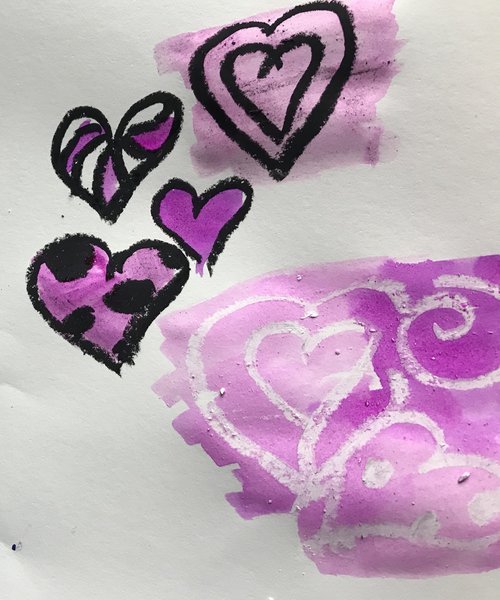
Liquid watercolor resist is super fun for a homeschooler. Kids can leave secret messages, write out their spelling words, or even do math problems – and just paint right over it to reveal it.
Recommended Liquid Watercolors
A quick search brings up a boggling amount of liquid watercolors. Here are a couple tried and true sets that my kids and I have found reliable, at different price points:
- Colorations Liquid Watercolors, set of 6
- Sax Liquid Watercolors, Fluorescent colors, set of 6
- Handy Art Liquid Watercolors, Glitter, set of 6
Join one of our Memberships!
This is an example of the fun we have inside the Glitterbombers Memberships. Chose the level right for your students – Glitterbombers (K-7th) or the new Glitterbombers HIGH (7th-12th). With either choice, you’ll have hundreds more art projects, videos, and resources at your fingertips for whatever you’re studying, or whatever art concept you’re ready to teach. Head here to hop on the waitlist and find out when we open next!
